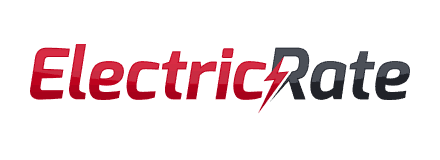What Are Peak Hours for Business?

As a business owner, you are probably always searching for opportunities to find savings that can be reinvested into growing your company. Electricity can be a big cost item so if you haven’t yet heard about TOU rates, it might be the time to see whether you can save a lot of money by switching your electricity usage to off-peak hours.
What is Time of Use Pricing?
You probably know that generating electricity costs money, but you might not be aware that the cost of electricity is different at different times during the day, week, or year. However, it seems natural – electricity is less expensive in the summer because people don’t have to heat their homes. Similarly, electricity is cheaper at night because, well, no one uses it.
However, think of a late afternoon when everyone comes back from work or school and starts cooking, watching TV, playing music, or turning on the AC unit – that when the demand for electricity (and the cost of producing it) peaks.
That didn’t matter much when the energy industry was regulated, but once the energy rates in deregulated markets were up for grabs, retail energy providers (REPs) were able to implement different prices for different times of the day, called Time of Use Pricing (TOU).
With a TOU rate, you essentially pay a lower price for electricity during the off-peak hours and a higher price during the peak hours. You probably guessed that the idea behind this type of plan is to encourage customers to shift their energy usage from peak hours to non-peak hours.
3 Different Time Periods
Time of Use Pricing can typically be broken down into three different time periods – Peak, Off-Peak, and Mid-Peak. The actual time boundaries of these periods vary, based on the retail electricity provider or utility. If you are signing up for a TOU plan, always read the contract conditions thoroughly – it will contain the exact times of day when the price per kilowatt-hour of electricity will vary.
Peak Hours
In most cases, peak hours for electricity start at 7 am and last until 10 pm on weekdays (Monday to Friday) in summer and from 8 am to 11 pm in winter. This is often when the demand for electricity is greatest – think the morning when you are switching on the appliances to go to work and the afternoons when you are returning – these peaks in demand for electricity create a burden on our electricity grid.
Mid-Peak
During the mid-peak hours, the demand for electricity is moderate. These periods are busy during the daytime, but not the busiest times of the day. In summer, mid-peak periods fall between 7 am – 11 am and 5 pm – 7 pm. In winter, it would be late evening hours, between 5 and 11 pm. Not every supplier offers mid-peak hour rates and you are more likely to come across just peak and off-peak hours.
Off-Peak
Off-peak hours are the times of day and week when the usage of electricity is at its lowest. If you are on a time-of-use rate (these plans are often called free nights or free weekend electricity plans), these are the best times to use electricity because the price is often lower than the basic service price. Naturally, off-peak hours fall in the nighttime (typically between 11:00 pm and 7:00 am) or during the weekend.
Tips for Reducing Peak Energy Use for Businesses
Marketing materials for free nights or free weekends electricity plans will tell you that you can save 30 to 40% on your electric bill by switching to TOU rates. They make it sound so easy!
However, let’s be realistic – you won’t be able to shift 100% of your usage to the designated time periods and the reality is that the electricity during the peak-hours is much higher than regular service charges.
On the other hand – you can make the TOU rates work for you. There are ways to reduce your energy usage during the peak hours, if you can dedicate some small effort to make small changes in your daily habits.
Use Telecommuting
If you are a business owner and your work allows it, allow your employees to work from home every once in a while. You will drastically reduce the amount of electricity spent on heating, light, running the coffee maker, and so on. The COVID-19 pandemic has so far demonstrated that widespread telework across industries is not only possible but has the potential to improve productivity too.
Unplug Electronics When Not in Use
Get in a habit of unplugging appliances you are not using – be it lamps, laptops, or a stereo. Even items that are turned off with a button still consume electricity and when added up, cost you a few extra dollars on your utility bill. Consider getting a smart power strip for your business, which shuts off electronics that are no longer in use, to avoid high standby power costs.
Do Laundry on the Weekends
Do you run a business that requires you to use electricity for doing laundry or washing dishes? How much effort would it take to switch the majority of this workload to the weekend? Remember that the weekend rates on a TOU plan are 30-40% cheaper – it might be worth making a small adjustment to your weekly schedule.
Keep Your Thermostats Set
Adjust your thermostat two degrees up in the summer and down two degrees in the winter and don’t let anyone in the office temper with the settings.
If you have the option, it might be a good idea to invest in a programmable AC that will adjust your temperature automatically to maximize your savings. Many suppliers offer a free programmable thermostat as part of the promo, when you first sign up, to encourage you to start saving electricity.
Hibernate Your Computers
We know, no one wants to wait for the PC or the laptop to reboot in the morning (though it often takes less than 2 minutes). However, by not putting your laptop in sleeping mode or turning it off, you’re burning through an extra 34 dollars on your annual energy bill. Multiply that by the number of computers in your house or a company and you get the idea why you should be concerned.
Install Motion Sensors
If you install motion sensors in the office, the lights will turn off automatically when the employees leave for the day. Better yet, installing them in the bathroom will prevent the lights from being on all day when no one is using the facilities. These small calculated choices can result in big savings at the end of the month.
FAQs
What is the cheapest time of day to use electricity?
The cost of producing electricity is usually lowest when the supply is higher than the demand. These are called off-peak hours. Naturally, they fall in the nighttime (typically between 11:00 pm and 7:00 am) or during the weekend when people are out and about. If you are on a time-of-use rate, these are the best times to use electricity because the price is often lower than the basic service price.
What are peak hours for SDG&E?
For the TOU energy rates offered by San Diego Gas & Electric, the peak-hours (hours of the day that have high energy demand resulting in higher prices) are 4 pm to 9 pm while the off-peak hours are all hours outside these timeframes. The supplier offers various energy pricing plans with “super off-peak” time periods that offer even lower prices.
Updated on



